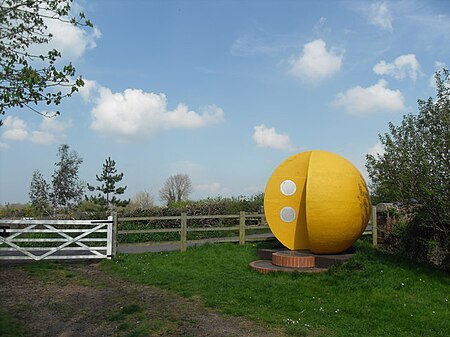Somerset Space Walk

The Somerset Space Walk is a sculpture trail model of the Solar System, located in Somerset, England. The model uses the towpath of the 22-kilometre (14-mile) Bridgwater and Taunton Canal to display a model of the Sun and its planets in their proportionally correct sizes and distances apart. Unusually for a Solar System model, there are two sets of planets, so that the diameter of the orbits is represented. Aware of the inadequacies of printed pictures of the Solar System, the inventor Pip Youngman designed the Space Walk as a way of challenging people's perceptions of space and experiencing the vastness of the Solar System. The model is built to a scale of 1:530,000,000, meaning that one millimetre on the model equates to 530 kilometres. The Sun is sited at Higher Maunsel Lock, and one set of planets is installed in each direction along the canal towards Taunton and Bridgwater; the distance between the Sun and each model of Pluto being 11 kilometres (6.8 mi). For less hardy walkers, the inner planets are within 430 metres (1,410 ft) of the Sun, and near to the Maunsel Canal Centre (and tea shop) at Lower Maunsel Lock, where a more detailed leaflet about the model is available.The Space Walk was opened on 9 August 1997 by British astronomer Heather Couper. In 2007, a project team from Somerset County Council refurbished some of the models.
Excerpt from the Wikipedia article Somerset Space Walk (License: CC BY-SA 3.0, Authors, Images).Somerset Space Walk
Bankland Lane,
Geographical coordinates (GPS) Address Nearby Places Show on map
Geographical coordinates (GPS)
| Latitude | Longitude |
|---|---|
| N 51.0626 ° | E -2.98888 ° |
Address
Bankland Lane
TA7 0DH
England, United Kingdom
Open on Google Maps










